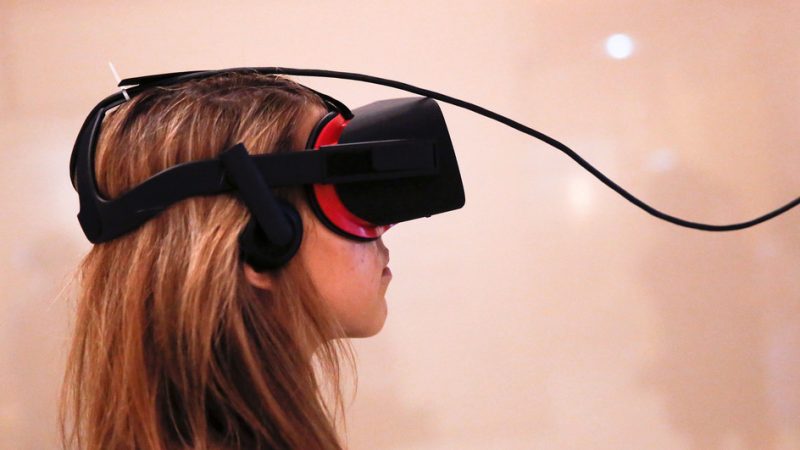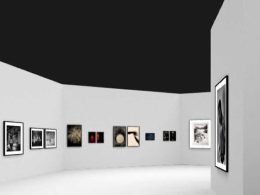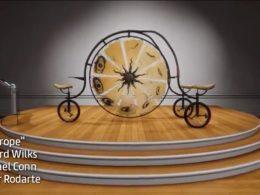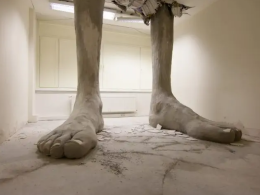Virtual reality opens up new spaces for art. And is turning the art market on its head. VR art expert Tina Sauerländer explains why she prefers digital art to an analogue image.
In a dark room, a rainbow shimmers on a fine waterfall. If you move towards the waterfall, the colours of the rainbow change. If you touch the waterfall with your hand, new light reflections and colour patterns appear.
The new Virtual work of art by light artist Olafur Eliasson immerses the viewer in the world of a natural phenomenon with the help of virtual reality glasses.
New spaces, new boundaries
"Thanks to virtual reality, artists can create a completely new space around the viewer," says German curator Tina Sauerländer. Last year, she organised an exhibition on virtual art at the House of Electronic Arts (HeK) curated in Basel and the Pecha Kucha Night organised.
"There is no longer a frame in virtual space. As an artist, you can disregard the laws of physics, such as the earth's gravity, and completely rethink your artwork."
New rooms, new laws
Although the market for virtual reality art is still very small compared to the traditional art market, it is growing very quickly, emphasises Tina Sauerländer. However, the growing attention also raises new questions - such as that of the author.
This is because very few artists today are in a position to programme a virtual work of art themselves. If the artist gives the programmer a lot of freedom, it can happen that both are named as authors. However, if the artist specifies everything precisely, the programmers only appear in the detailed description of the artwork.
There is also a high probability that there will be new problems, such as the Report about AR bombing.
New rooms, new market
However, not only authorship, but also the role of the collector, which is important for the art market, must be redefined with the advent of digital art and VR art. This is because digital art follows the rules of the web when it comes to accessibility.
"That's the great thing about digital art: it remains accessible and visible to many people via the internet. Unlike a painting that disappears into a collector's private collection after an auction and is never seen again," says curator Tina Sauerländer.
The sale of virtual art is also moving with the times: there are now various virtual reality galleries on the internet where you can buy digital works of art.
For example, the London-based company "Acute Art" the virtual rainbow by Olafur Eliasson for the equivalent of around CHF 10 per month or CHF 30 per year.
New rooms, new access
Immerse yourself in art from the comfort of your own home, on the sofa. Will this make going to the museum obsolete? No, says Tina Sauerländer. Instead, she sees virtual art as a way of making it easier for people to access art and thus reach more people.
But what impact do the new technologies have on our view of art? What value does art have when we are suddenly part of it and can even help shape it? And above all: when it is always and everywhere available?
Tina Sauerländer is optimistic: "I believe that future generations, whose lives take place very much online, will not see it as derogatory if works of art can only be perceived online. I don't think that diminishes the value of art."
One thing is certain: virtual reality art will have a significant impact on the art world in the 21st century. It is already turning the rules of the art market upside down, with virtual art being sold via monthly subscriptions, collectors putting their favourite pieces online and the programmer having contributed almost more to the work than the artist himself.
Source: SRF









